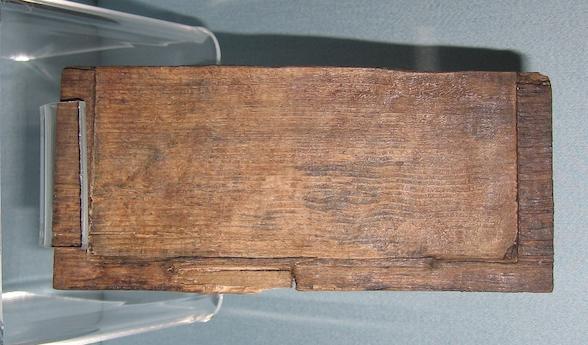
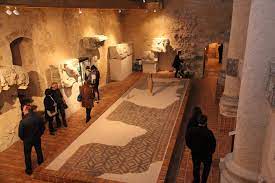
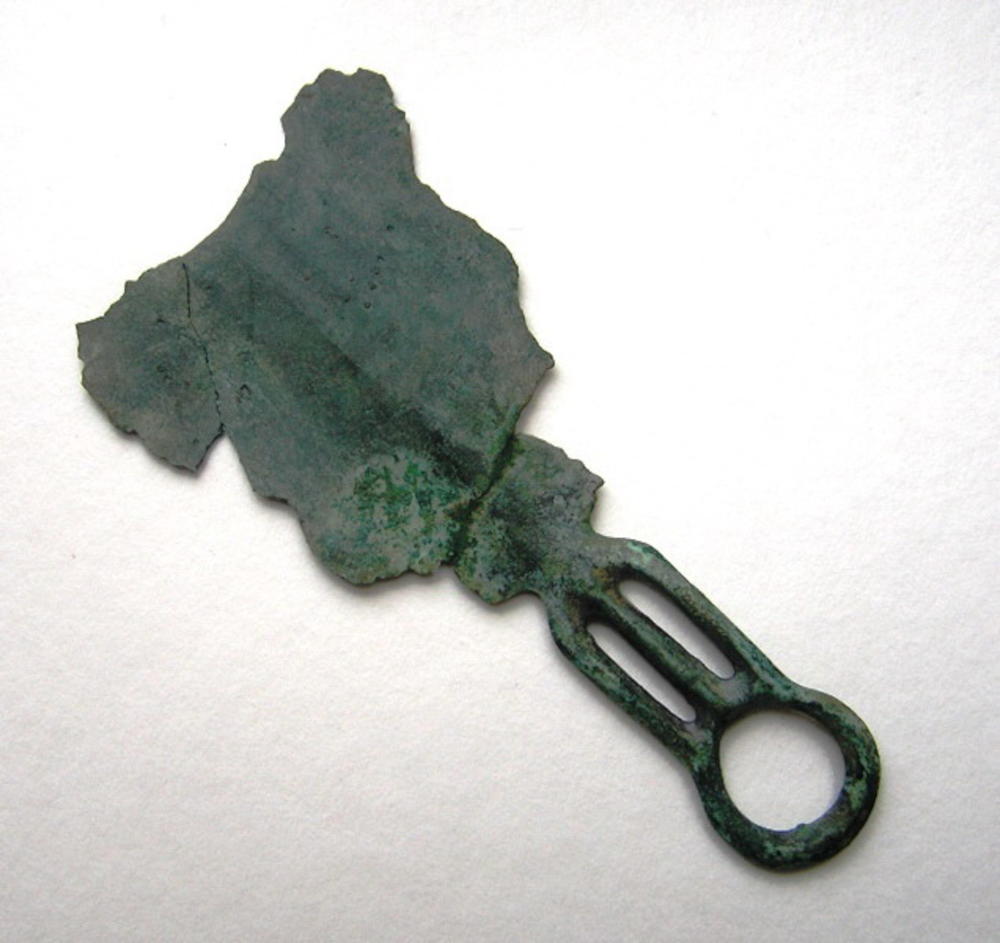
(2/ )
Final Bronze Age [- 1400/ - 800]
Stadecken type razor, characterized by a bipartite handle with a ring at the end.

(3/ )
Final Bronze Age [- 1400/ - 800]
The knife found in burial 103 has an arched back blade and a triangular distal tip. The latter has a double edge, which functionally brings this tool closer to a dagger. The upper part of the blade, from the base of the point to the handle, is decorated with a punch that is identical on both sides. It consists of a double row of dots over a line of scallops marked with a central dot. The back of the knife is not decorated. A flanged tongue and two rivets were used to attach an organic handle.

(4/ )
Final Bronze Age [- 1400/ - 800]
Dagger that has an ogival tongue with a light shoulder, pierced by two superimposed rivet holes, placed in the axis of the blade.
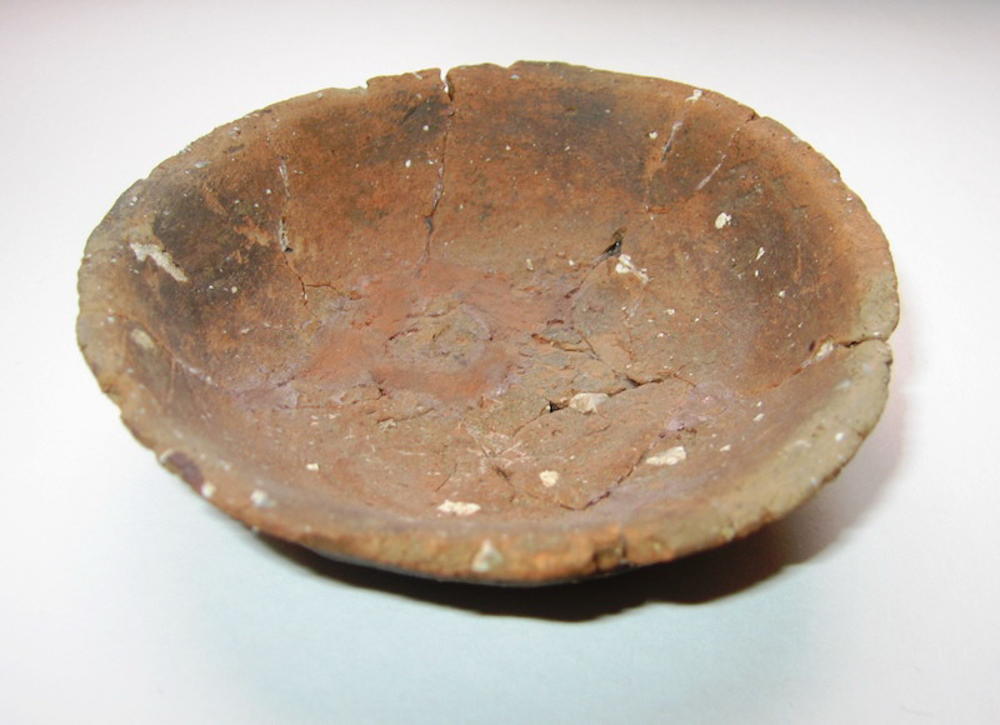
(5/ )
Final Bronze Age [- 1400/ - 800]
Low carination cup with a small everted edge.

(6/ )
Final Bronze Age [- 1400/ - 800]
Vase with globular body, funnel neck, horizontal grooves decoration.
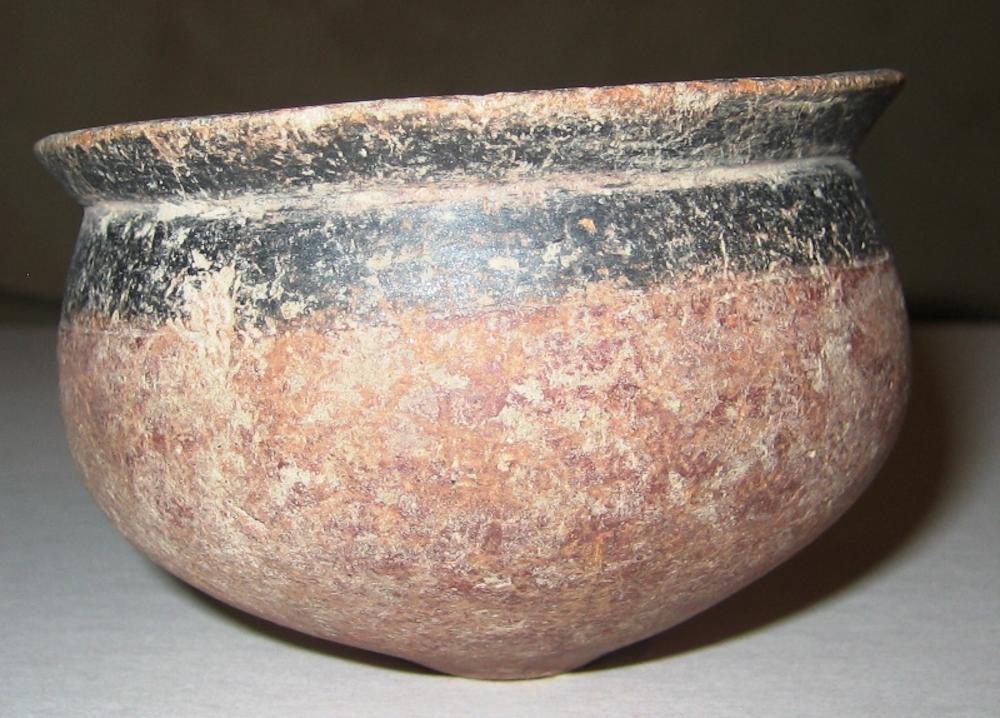
(7/ )
Final Bronze Age [- 1400/ - 800]
This is a small onion bulb cup, uncovered, whole, inside the vase n°1. It measures 5.8 cm in height, 8.3 cm in diameter at the opening, 8.3 cm maximum at the belly and 2 cm in diameter at the base. The lip is rounded. The inner and outer rim of the vase, as well as the top of the body, over a width of 9 mm, are graphited. The rest of the body is painted in carmine red. The paste, well fired, is orange-brown.

(8/ )
Final Bronze Age [- 1400/ - 800]
It is a bowl, with a convex body and a very slightly retracted rim. The lip is flattened slightly oblique-internal. It measures 7.7 cm in height, 12.6 cm in diameter at the opening and 4.3 cm in diameter at the base. It is not decorated. The paste, well fired, is bistre and brown. Non-plastic elements are few and fine (around 0.5 mm). Some coarser inclusions are also visible (up to 2 mm). The external surface is carefully smoothed. Inside, one can distinguish a first upper zone well smoothed, from a second lower one visibly eaten by a particular content.
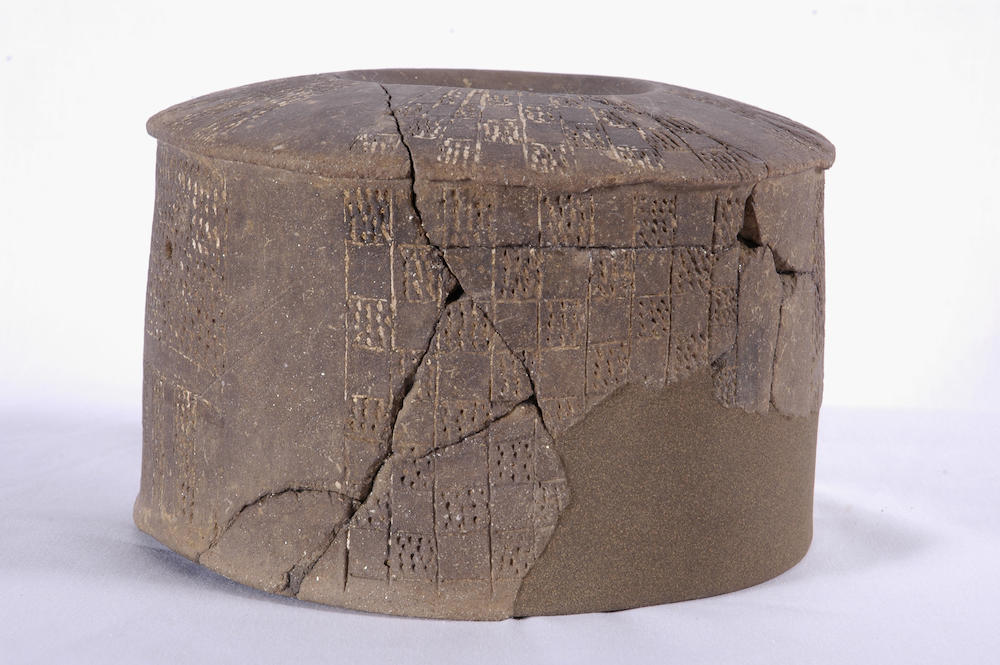
(9/ )
Middle Neolithic [- 4600 / - 3400]
Supporting vessel with straight edge, carina and hollow bottom. The exterior is richly decorated with incisions inlaid with white paste

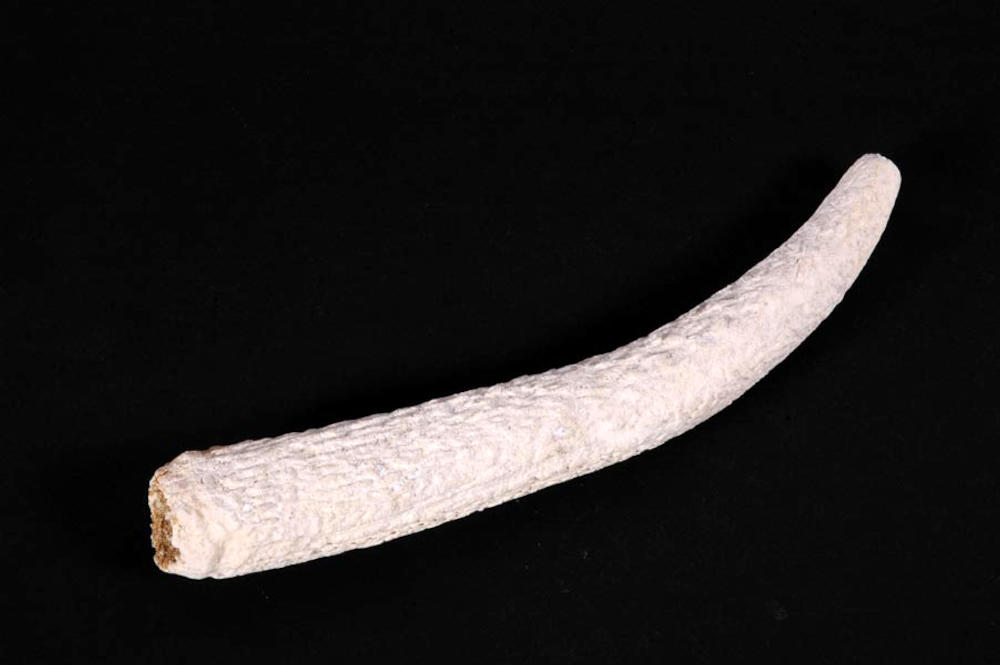
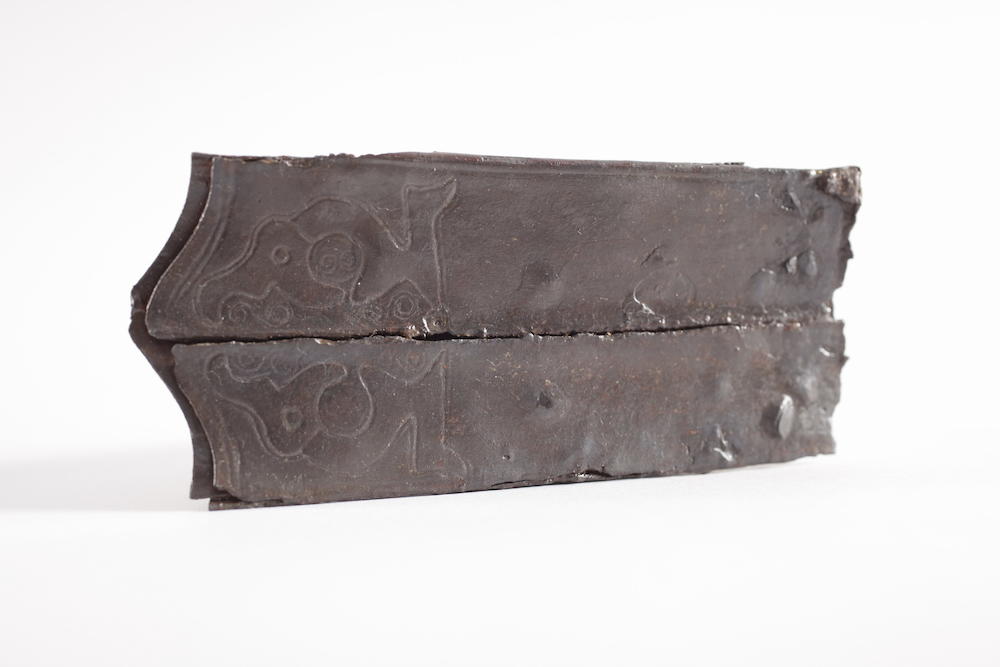
(12/ )
2nd Iron Age [- 480/ - 50]
Scabbard with central rib and lateral gutters. It seems to be broken after folding. The sheet metal at the level of the break appears slightly curved. The upper end is of the flattened "chapeau de gendarme" type. The trigger guard is held in place by two discs that appear to be riveted to the scabbard. On the obverse plate and on the upper part of the scabbard, a pair of griffins facing each other is engraved with a single or double line. The outline of the scabbard is also underlined by a linear engraving. The griffins motif is stripped of grenetis, which is for A. Bulard a criterion of evolution of this type of decoration. It is also related to that of Kosd and Szob (Hungary). Hungary, in the northern region of the Danube, is a major production center for this type of decorated scabbard. They are dated from the second half of the 3rd to the turn of the 2nd century BC. A scabbard of this type was discovered in Villeperot, about ten kilometers from the necropolis of Michery.
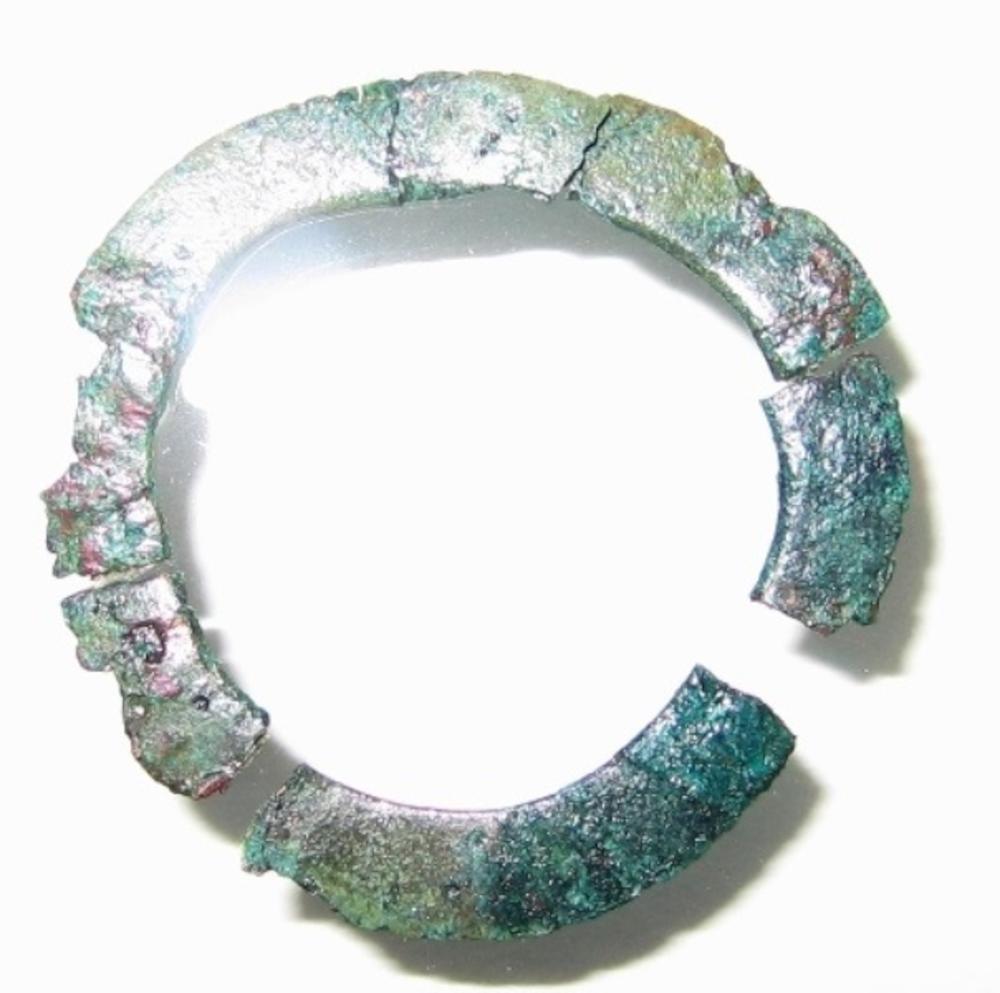
(13/ )
Final Bronze Age [- 1400/ - 800]
Flat bronze ring: it was collected from the pubic area of the deceased, near the bronze and lignite bracelets and a fragment of the pin. Circular in shape, it measures 330 to 335 mm in external diameter, 230 to 232 mm in internal diameter, with a maximum thickness of 1 mm. It is not decorated. There is a slight deformation of the internal perimeter and a rectilinear segment, 13 mm wide. In the hypothesis of a belt ring, it could be the place provided to fix the end of a leather or fabric belt.
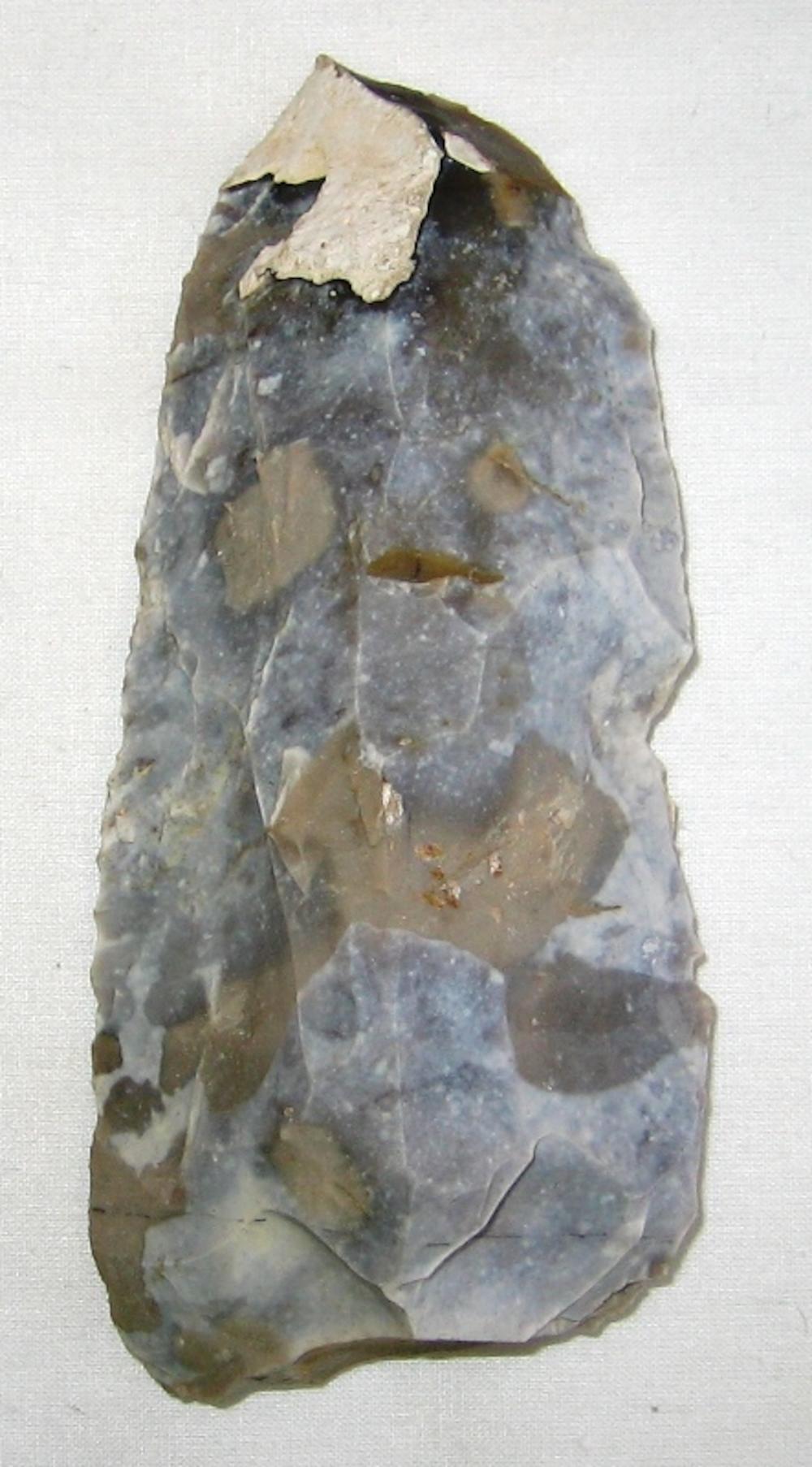
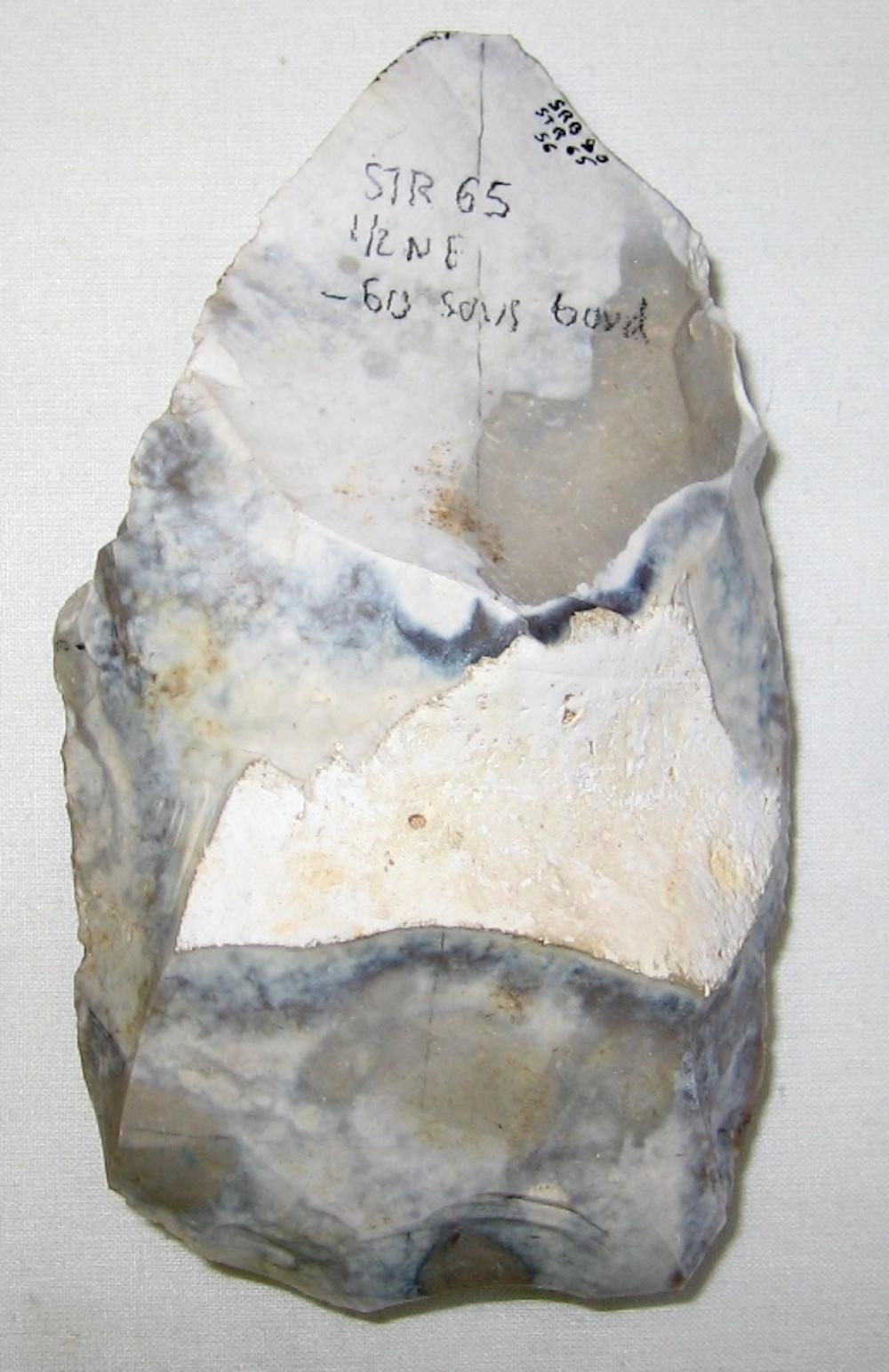

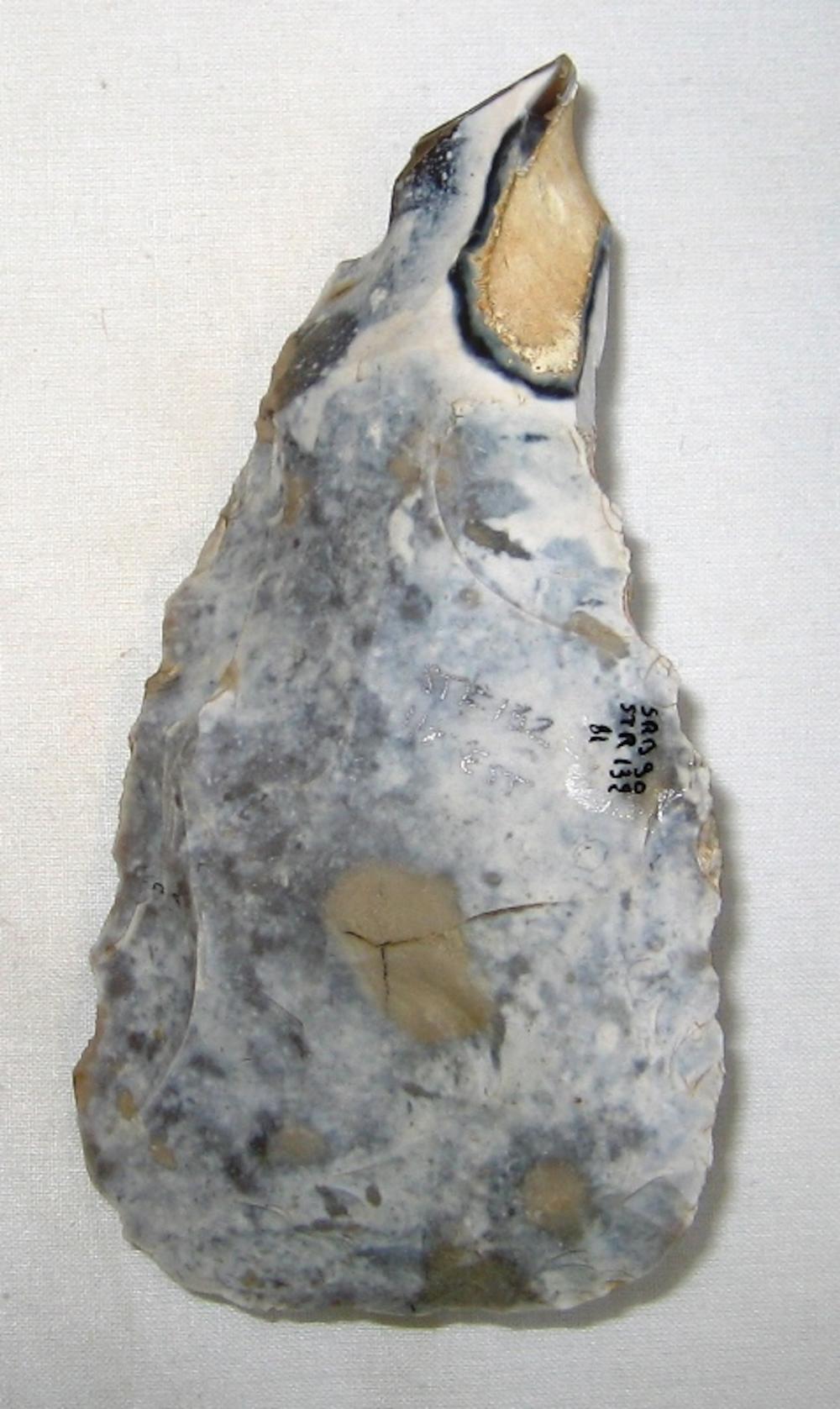
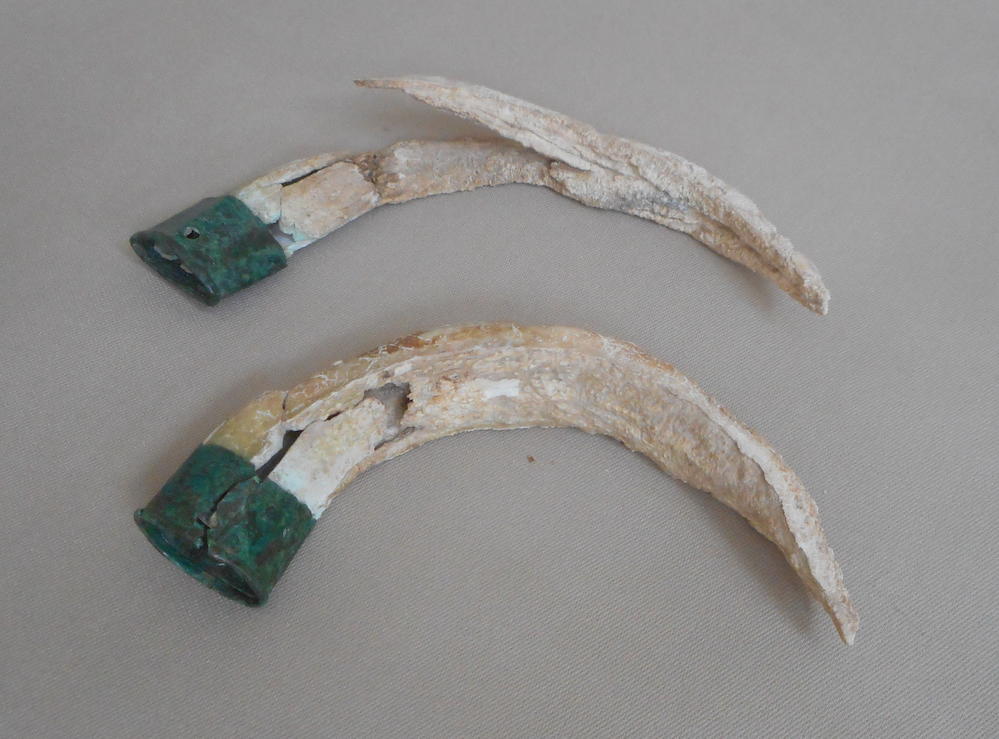
(18/ )
1st Iron Age [- 800/ - 480]
Two tusks of suidae set in bronze. Situation : placed on the right elbow of the buried person. Characteristics : straight lower canines with undecorated bronze ferrules; two perforations located 5 mm from the outer edge of the ferrule; rivets still in place.

(19/ )
1st Iron Age [- 800/ - 480]
Bronze fibula with a free foot of the classical Dux type, with an internal string and a spring with two times three coils. The arch is of flattened oval section. The top of the bow is decorated with a punch, with lozenges filled with occulted circles and an incised band. The foot ends with an oval bead topped by a beak".
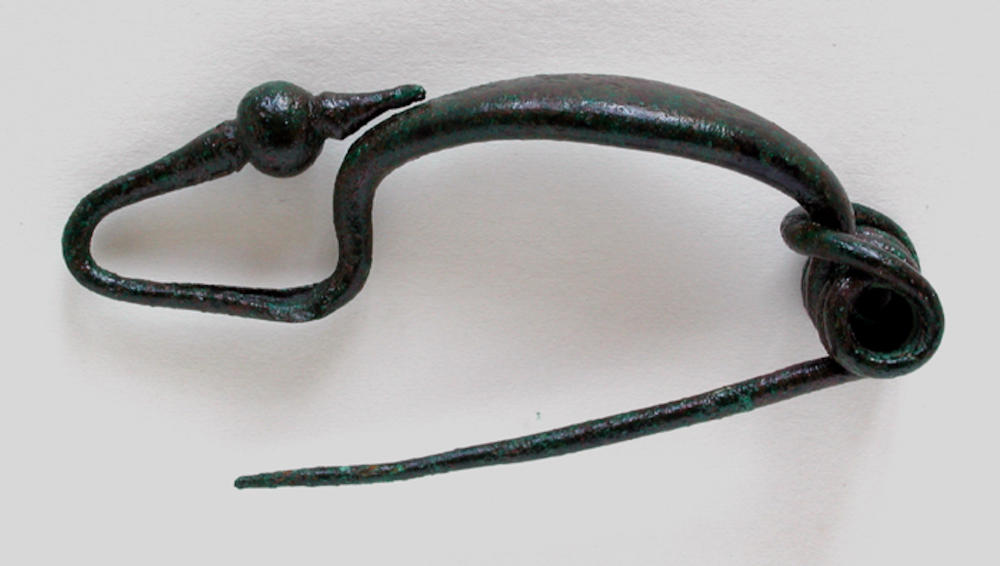
(20/ )
1st Iron Age [- 800/ - 480]
Bronze fibula of the Dux type, with internal cord and spring with two times three coils. This second fibula is smaller than the previous one. Its oval arch is flattened. It is decorated in its center with five pointed circles arranged in a rhombus and a group of four rhombuses also occulted, on either side of the previous motif. The foot ends with a globular bead topped by a beak.
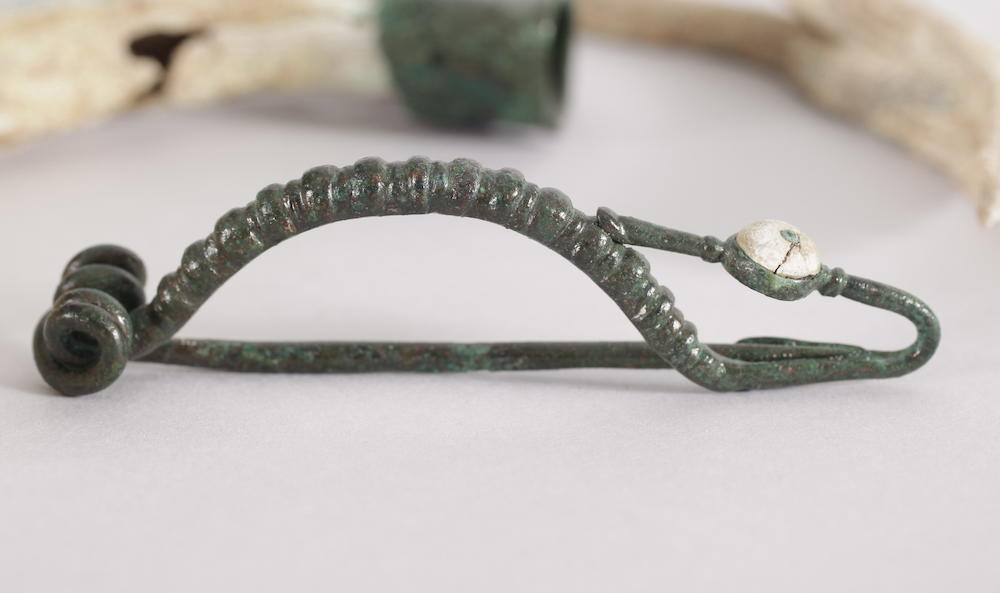
(21/ )
2nd Iron Age [- 480/ - 50]
Bronze fibula, with free foot, external string, two-coil spring and molded bow. The foot ends in a small hollow bronze cabochon filled with white coral, fixed with a bronze rivet. It is surmounted by a rather long beak. The barb holder is decorated with two small flutes."
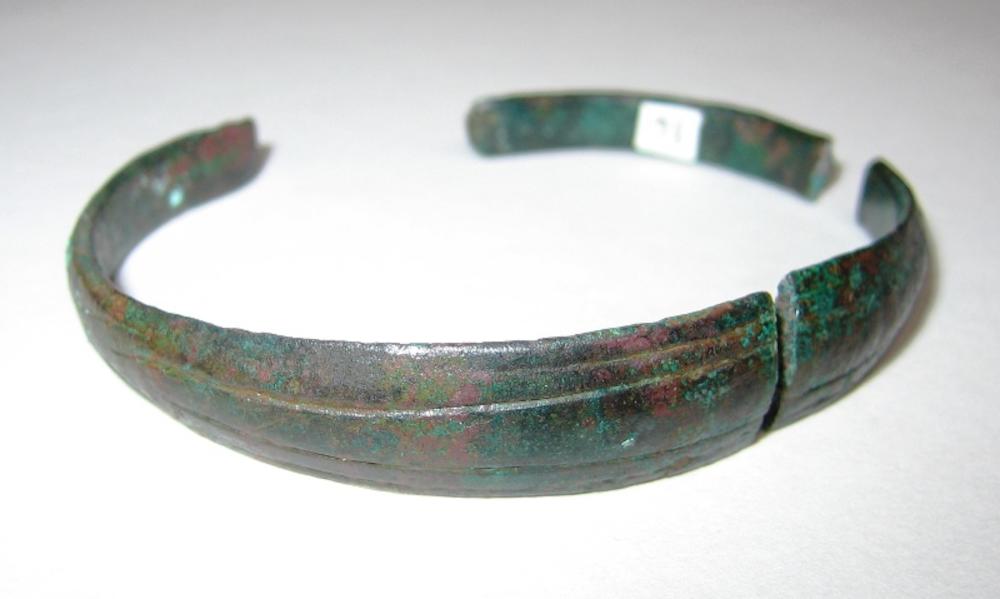
(22/ )
Final Bronze Age [- 1400/ - 800]
Four bronze bracelets (D.90.4.14, D.90.4.16, D.90.4.17, D.90.4.137): these four objects were found grouped together on the pubic bone of the deceased. The absence of bones from the forearms makes it impossible to conclude whether these ornaments were worn symmetrically or asymmetrically. They are strictly identical to each other. They are open bracelets, oval in shape; the section is slightly curved on the outside and flattened on the inside. The ends have a more marked bulge on the outside. They have two types of decoration: a first decoration of longitudinal incisions filled with interlocking chevrons on the body of the bracelet and a second decoration of two deep moldings on the ends. Two bronze anklets : (D.90.4.15 ; D.90.4.36). Location: at each ankle. Characteristics : Strictly identical to the four previous bronze bracelets
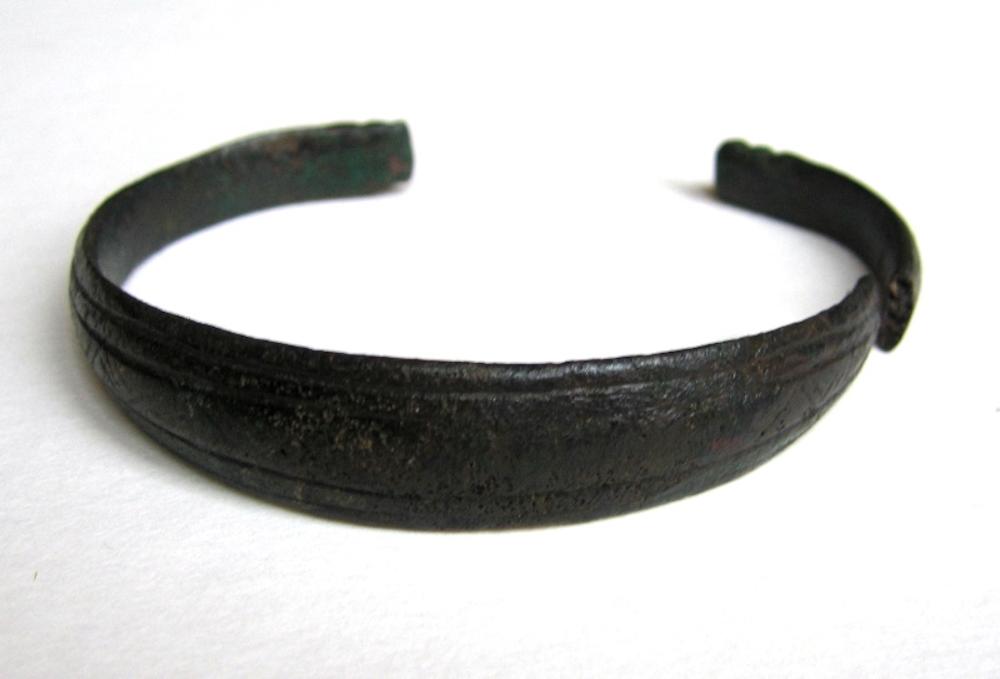
(23/ )
Final Bronze Age [- 1400/ - 800]
Four bronze bracelets (D.90.4.14, D.90.4.16, D.90.4.17, D.90.4.137): these four objects were found grouped together on the pubic bone of the deceased. The absence of bones from the forearms makes it impossible to conclude whether these ornaments were worn symmetrically or asymmetrically. They are strictly identical to each other. They are open bracelets, oval in shape; the section is slightly curved on the outside and flattened on the inside. The ends have a more marked bulge on the outside. They have two types of decoration: a first decoration of longitudinal incisions filled with interlocking chevrons on the body of the bracelet and a second decoration of two deep moldings on the ends. Two bronze anklets : (D.90.4.15 ; D.90.4.36). Location: at each ankle. Characteristics : Strictly identical to the four previous bronze bracelets
